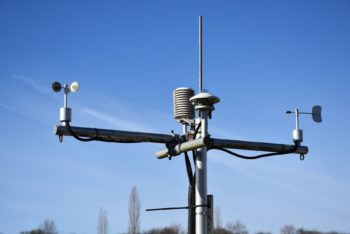The Use of Sub-Seasonal Forecasting to Improve Operational Decision Making
Competition: Breakthrough 2: Catalyst
Amount awarded: £678,750
Led by: Thames Water
Partners: Met Office, Northumbrian Water, United Utilities, Anglian Water, Bristol Water, Southern Water, Severn Trent, Southwest Water, Wessex Water
Project completed: April 2025
Water cycle tag: Enabling activities
The project, “The Use of Sub-Seasonal Forecasting to Improve Operational Decision-Making,” aligns with Ofwat’s strategic innovation themes, addressing long-term operational resilience, proactive environmental management and the adoption of innovative practices to benefit customers, society and the environment. This project focused on bridging the gap left by traditional weather forecasting systems, which often provided insufficient notice for operational adjustments, leading to inefficiencies, increased risks and potential environmental impacts.
The project served as a foundational step in strengthening the water sector’s preparedness for extreme weather events by developing innovative sub-seasonal forecasting models (up to 30 days) for predicting water demand and priority waste alarm events. By introducing advanced forecasting capabilities, the project enabled all participating water companies to anticipate and respond to extreme weather events more effectively, enhancing resilience, operational efficiency and environmental protection in a rapidly changing climate.
The project’s two primary work streams were successfully developed and delivered:
- Forecasting Water Demand: Enhancing existing clean water forecasting systems to optimise production, storage and maintenance planning.
- Wastewater Alarm Prediction: Conducting feasibility trials for using sub-seasonal forecasting to predict priority waste alarm events.
Leveraging the Met Office’s advanced forecasting tool, Decider and working closely with water companies and subject matter experts, the project successfully developed and tested tailored forecasting models. Key outputs include:
- Clean Water Sector Models: Enhanced tools for operational planning, improving scheduling efficiency, optimising resource allocation and identifying low-risk periods for maintenance.
- Wastewater Sector Trials: Demonstrated feasibility for predicting priority alarm volume spikes, potentially, enabling earlier proactive responses to critical issues and informing future development.
- Scalability and Collaboration: Testing and scaling models with data from all participating companies provided valuable insights for tailoring solutions to diverse regional needs.
The project delivered immediate benefits across multiple areas. For customers, it improved service reliability and reduced interruptions. For society, it enhanced preparedness for extreme weather events, minimising environmental risks and potential reputation damage. Additionally, for the environment, it enabled proactive resource management and reduced ecological impacts, contributing to greater sustainability.
In the clean water sector, the models significantly improved resilience, preparedness and operational efficiency. In the waste sector, while the feasibility trial was promising, further work is planned, via a WBC5 application, to refine and expand these capabilities, enhancing resilience in critical operations.
The integration of forecasting tools into operational workflows remains a key priority to unlock their full potential. Collaborating with digital technology teams will ensure that outputs are effectively embedded, highly visible and readily accessible for decision-making. This integration will drive informed planning, operational efficiency and improved decision-making across the water sector, supporting long-term sustainability and resilience.


